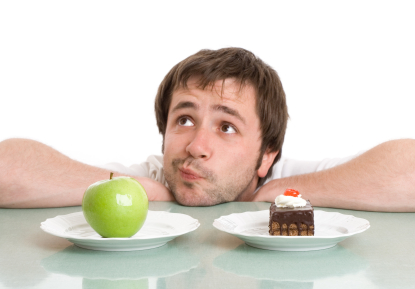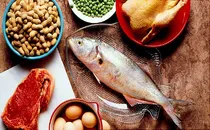
Earlier, we’ve gone through
our ideal daily calorie and macronutrients intake for fat loss.
If you have not read
them yet, here’s the link below:
Now, we will dive into
the specifics of the fat loss diet plan by making the right food choices for
the best results.
Current Trend

When it comes to fat
loss, most of us tend to draw a line between ‘clean food’ and ‘dirty food’. We
think we’ll need to say goodbye to our favourite snacks, cravings or desserts
in order to get in shape. No more McDonald’s, pizzas, cakes, sweets, ice-cream,
donuts, biscuits, pies… and the list goes on. If this was the case, I think
most of us including me would rather stay out of shape or overweight than
living such a miserable life. We food lovers can definitely relate to that
feels.
So, the question here
is do you have to eat only ‘clean food’ in order to lose fat?
No! Previously, we’ve
just learnt that fat loss is all about calorie deficit. Thus, it does not
matter WHAT we eat but it is HOW MUCH we eat that matters. Feel free to include
some dirty snacks you’ve been craving into your fat loss diet.
But then, some of us
may abuse this freedom and choose only dirty food in their fat loss diet. Yes,
if it fits your calorie and macronutrients intake, you’d still be getting fat
loss results. However, it is very unhealthy to do so. Also, dirty food are not
as filling as clean foods that provide higher volume with lower calories

Therefore, here’s my
recommendation for most people:

About 80% of total
calories for clean food and 20% for dirty foods
This will ensure that you
get most of the calories from healthy and nutritious food while allowing a small
portion of the calories to satisfy some of your cravings while dieting.
Bottom Line
The reason I did not
include a specific list of food choices is because we all have different types
of food that we like or dislike. Remember my post about ‘The Best Diet Plan?’?
A good diet plan should always cater to our own specific needs only. So, you’ll
have to make your own food choices based on the guidelines above and fit them
into your daily calories and macronutrients intake. Then, you will be able to
set up a perfect fat loss diet plan for yourself.
On my next post, I
will blog about scheduling which includes meal timing (what time of the day you
should eat your meals) and meal frequency (how many meals per day)
If you find this post
helpful, feel free to help spread the word by sharing it!
For any inquiries, you
can always contact me through e-mail:
jswongtraining@gmail.com























